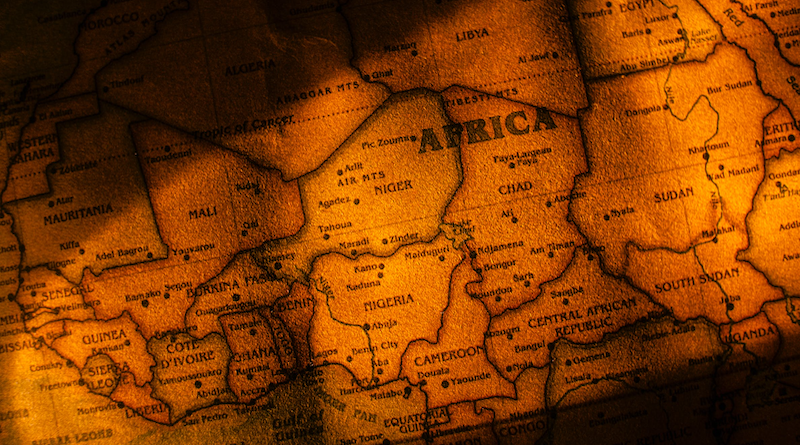The so-called “coup belt” in Africa, which includes almost all the countries of the Sahel, are in confrontation with the Economic Community of West African States. There are also a myriad of Al-Qaeda and Daesh groups operating in the region. This violence feeds into the flow of displaced persons and migration flow. To their north is Libya, a principal point of impact, and beyond Europe. This fact is not a new message, but there is a new urgency.
To be sure, African migrants are not “overwhelming” Europe now. In 2020, the total number of African migrants was 40.6 million. This figure is only 14.5 percent of the global migrant population, much less than Asia’s 41 percent and Europe’s 22.5 percent. Less than one-third of all African migrants live in Europe. Current numbers suggest the same rate of flow, but the maritime factor of drownings from illicit crossing of the Mediterranean continue to frustrate and challenge officials on both sides of the sea, receiving wide coverage in the media. It is a continuing tragedy.
The complexity of the situation on the ground in the Sahel only feeds this phenomena heading north toward Europe. With the Gabon coup, the security equation is changing with growing ground-level grievances. Migration issues are already a major problem on the seas and for governments, an issue that is only going to get compounded.
The impact on the North Africa/Mediterranean maritime arena in terms of migration flows is already well documented, with drownings, mishaps and passport control processing centers being overwhelmed. Tens of thousands from different corners of the African continent, and especially the Sahel, have streamed into criminally run outlets in Libya and directed toward European shores.
Sahel migrants can be weaponized, as the region remains contested and dangerous. The emerging Gabon versus ECOWAS crisis marks the beginning of a dangerous new era in international power politics. From an international security perspective, coercive engineered migrations are cross-border population movements that are deliberately created or manipulated in order to induce political, military and/or economic concessions from a target state or states. In 2021, Belarus engaged in this disruptive behavior before by inviting refugees to the country, then releasing them into Poland. The instruments employed to carry out this kind of coercion are diverse and have been around for decades.
To be sure, Africa’s youth bubble feeds into the support for coups and their leaders, depending on the ability of each country’s armed forces and police to maintain law and order. When counter-demonstrators or Islamist groups take advantage of the environment, the security situation only lengthens the time coup leaders remain in power. These leaders inherit the wealth-generating sectors of the countries they now manage, but still fail to redistribute the benefits. When it comes to poverty in this part of Africa, a tragic situation has been worsened by the existing political plight of the Sahel. Those fleeing usually go north.
EU initiatives foresee stepping up joint work on the five priority domains of the 2017 Joint Valletta Action Plan, which aims to support African and European partners by enhancing migration governance. Several years later and the EU is still working on best practices based on this initial foray supported by Morocco. Rabat recognizes the impact of migration flows into Europe, and sees itself as a primary partner as a potential war between the coup states and ECOWAS breaks out. But there needs to be immediate preparation by relevant EU organizations, as well as NATO, for whatever ultimately comes from the coup belt political-social mechanics.
This Sahel/coup belt confrontation is drawing outside powers who have been competing for a piece of the “financial pie” in mining, infrastructure development and trade. Russia is likely to be fielding supplies to their clients in this part of Africa, sometimes cooperating with China and other countries, sometimes not. Turkiye is another player, but not front and center currently.
There is no doubt that the Sahel faces growing fighting between terrorists, state actors, and outside actors, making the Libya model of warfare for the past decade a model for what happens next in this part of Africa. More than 50 Burkina Faso soldiers were killed in a terror attack in the past week. In addition, Russia, China, Turkiye and the Gulf states are all competing for influence in this “hot zone.” Depending on the outcomes in the Sahel, migration flows are going to increase. The Sahel’s threat environment has only grown worse, and Western powers are falling behind. Enter Europe.
Research shows that the international community — the West — generally considers mass migrant population flows across nation states a primarily humanitarian crisis. But many times migrant flows are often an intentional tool of aggression used by state actors. The weaponization of migrants is the instrumentalization of population flow through both the threat and the actual migration of people into the territory of a target state, especially in Europe. Paris has suffered the most and will likely lose more as challenges to French law and order become more focused from Sahel upheaval and migration flows. The French ejection from the bulk of the Sahel region is a demonstration of one of the geopolitical games that is being played out now.
Overall, the coup belt states face numerous threats that given the current trajectory will result in increasing numbers of migrants heading into North Africa, with perhaps Libya as the focal point, challenging that state’s political processes and infighting. Europe has to be ready for what comes next from the coup belt in terms of possible migrant weaponization. International agencies may need to be ready with constabulary missions to help with health, safety and security of families, women and children.
FacebookTwitterEmailFlipboardMastodon

